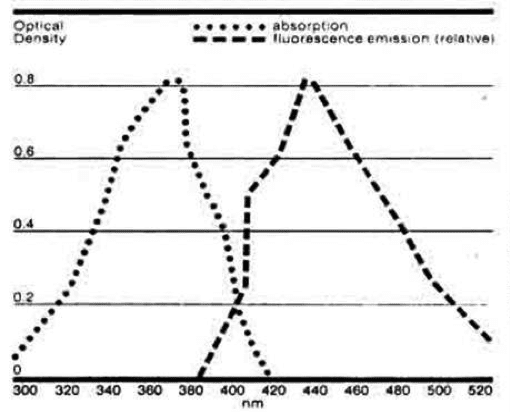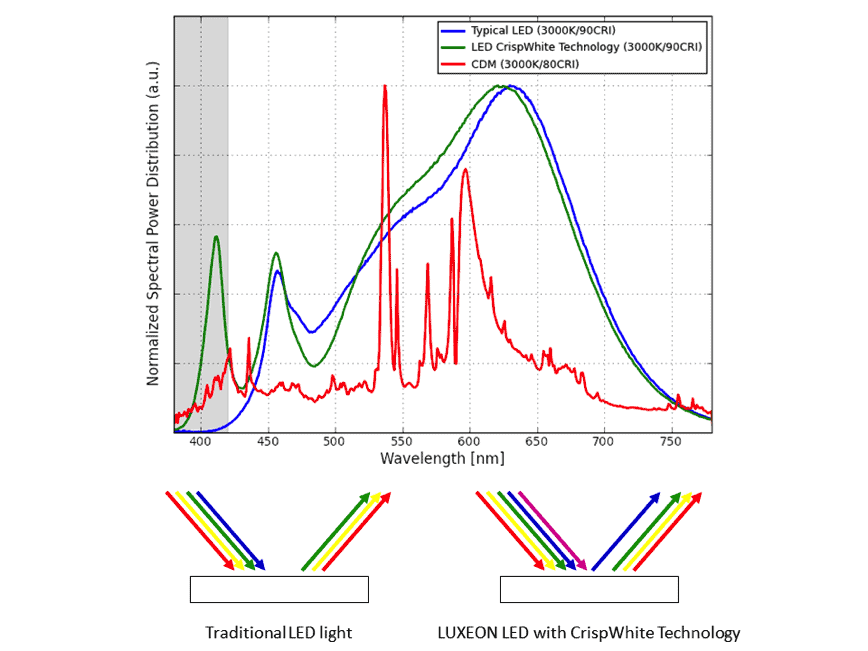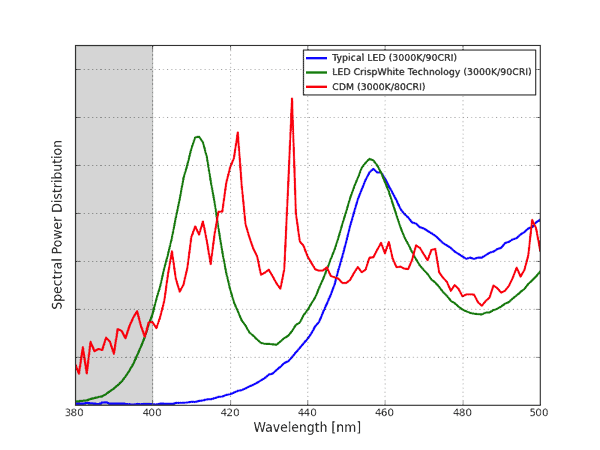Lighting plays a critical role in retail environments. It impacts every aspect of the shopping experience, from customer attraction to the time a customer spends in a store, from merchandise selection to the likelihood of a customer returning to a store. To satisfy their need for bright, sparkling white together with beautifully warm, saturated colors, retailers typically rely on Ceramic Metal Halide (CDM) lighting.
LED lighting offers various advantages over CDM lighting, including its ability to turn on instantly, ease of control, dimmability, and better efficacy. However, most LED sources cannot deliver the bright, sparkling white and rich, saturated colors retailers demand. LUXEON LEDs with CrispWhite Technology can meet the lighting needs of high-end retailers because they are engineered to offer excellent color rendering and to give white objects their brilliance.
The perceived color of an object, when illuminated, depends on the spectral content of the light which is reflected back from its surface. For example, fabrics and paper, which are made of natural fibers, have a tendency to absorb some of the blue light, which is present in a broad spectrum natural white light source, such as sunlight. This causes the fabric or paper to be perceived as yellowish or ivory. In order to combat this effect, Fluorescent Whitening Agents (FWAs) are often incorporated into dyes, inks and even laundry detergents. FWAs absorb near ultraviolet light (300nm – 400nm), which is present in natural sunlight, and re-emit the absorbed energy as longer wavelength photons in the blue spectrum (Figure 1). Consequently, the sunlight reflected from white objects, which are treated with FWAs, contains sufficient blue light to compensate for their natural yellowish appearance, making them look crisp white instead.

Traditional white LEDs do not have sufficient spectral content in the deep and (near) violet regime to activate the FWAs in white objects. However, LUXEON LEDs with CrispWhite Technology are engineered to emit some deep blue light with a wavelength between 400nm and 415nm (Figure 2). This wavelength is short enough to stimulate the FWAs in white objects yet far enough towards the edge of the human eye’s sensitivity curve to not adversely impact the perceived color of objects, which have not been treated with FWAs. The spectral power distribution of a LUXEON LED with CrispWhite Technology is characterized by a double peak in the blue region.

LUXEON LEDs with CrispWhite Technology are color targeted below the black-body curve within the nominal 3000K ANSI color bin to create a warm and inviting environment. Moreover, LUXEON LEDs with CrispWhite Technology offer excellent color rendering with typical CRI-Ra and CRI-R9 values above 90 and 50, respectively, yielding colors which pop as well as vibrant reds (Figure 3). Finally, the warm white light from a LUXEON LED with CrispWhite Technology, in combination with the blue light from FWAs, yield a brilliant white color point for objects treated with FWAs. This white color point is very similar to the color point from Ceramic Metal Halide (CDM) lamps, which are widely adopted in commercial (retail) environments.

An important concern in retail lighting is the risk of merchandise fading when exposed to light for an extended period of time. This risk is typically determined by the following factors:
The first three factors are, in general, dependent on the retail environment and are, therefore, beyond the control of LED suppliers. However, the spectral content of an LED light source can be tailored to reduce the risk of fading. By design, a LUXEON LEDs with CrispWhite Technology contains negligible spectral content below 400nm (see Figure 4). Consequently, LUXEON LEDs with CrispWhite Technology are expected to be slightly less harmful than conventional halogen light sources, and a factor of two better than CDM light sources, assuming the same brightness.
